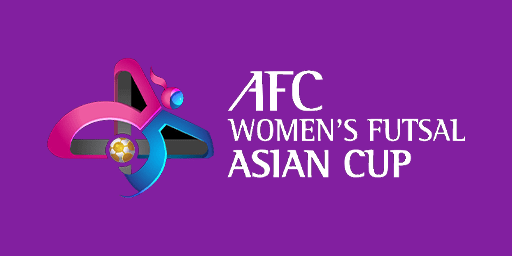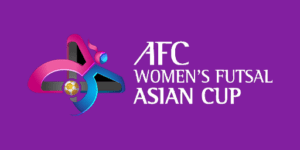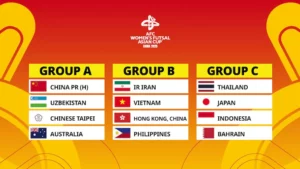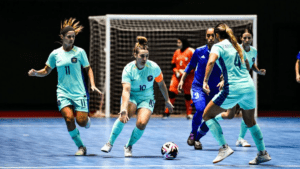The Women’s Futsal Asian Cup 2025 is set to be the third edition of Asia’s premier futsal tournament for women, bringing together the continent’s best national teams. Organized by the Asian Football Confederation (AFC), this tournament has grown rapidly in popularity and importance since its inception. As excitement builds for the 2025 edition, let’s take a closer look at the history of the Women’s Futsal Asian Cup, the key moments from previous tournaments, and what to expect this year.
The History of Women’s Futsal Asian Cup
The Women’s Futsal Asian Cup was first held in 2015 with the aim of promoting and developing women’s futsal in Asia. Since then, it has become a prestigious competition, providing a platform for female futsal players to showcase their skills and for national teams to assert their dominance on the Asian stage.
The tournament’s format features a group stage followed by knockout rounds, ensuring that only the best teams progress to the latter stages. The competitive nature of the tournament has led to numerous memorable matches and standout performances by both teams and individual players.
2015: The Inaugural Women’s Futsal Asian Cup
The first edition of the Women’s Futsal Asian Cup was held in Malaysia in 2015. It was a landmark moment for women’s futsal in Asia, attracting significant attention and laying the foundation for future editions.
Key Highlights:
- Champion: Iran emerged victorious, showcasing a dominant display of tactical discipline and individual brilliance. They defeated Japan in the final, marking a historic moment for Iranian women’s futsal.
- Top Scorer: Fereshteh Karimi of Iran, whose playmaking abilities and goal-scoring prowess were instrumental in her team’s success.
- Notable Performances: Japan’s attacking flair and tactical approach won them many admirers despite their loss in the final.
The success of the inaugural tournament demonstrated the potential for women’s futsal in Asia and set the stage for its expansion in subsequent years.
2018: Iran’s Continued Dominance
The second edition of the Women’s Futsal Asian Cup took place in Thailand in 2018, featuring more teams and a higher level of competition. Once again, Iran proved to be unstoppable, successfully defending their title.
Key Highlights:
- Champion: Iran, who defeated Japan 5-2 in the final, showcasing a balanced mix of attacking prowess and defensive solidity.
- Top Scorer: Fatemeh Etedadi of Iran, who played a crucial role in their title defense.
- Breakthrough Teams: Thailand’s impressive run to the semifinals highlighted the growing competitiveness of the tournament.
Iran’s back-to-back titles established them as the team to beat in Asian women’s futsal, while the tournament’s success reaffirmed the AFC’s commitment to growing the women’s game.
AFC Women’s Futsal Asian Cup 2025: What to Expect
As we approach the 2025 edition, anticipation is high, with fans eager to see if Iran can continue their dominance or if a new champion will emerge. The tournament promises to be bigger and more competitive than ever, featuring a mix of experienced teams and emerging contenders.
Key Teams to Watch:
- Iran: As two-time champions, they enter the tournament as favorites, boasting a squad with a blend of experience and young talent.
- Japan: Eager to avenge their previous losses, Japan’s tactical discipline and attacking depth make them strong contenders.
- Thailand: Playing on home soil in 2018 proved advantageous; they aim to build on that experience.
- Indonesia: A rising force in Asian women’s futsal, with a young squad full of potential.
The Growth of Women’s Futsal in Asia
The Women’s Futsal Asian Cup has played a significant role in boosting the popularity of women’s futsal across the continent. The AFC’s initiatives to develop grassroots futsal and invest in youth development have seen many nations significantly improve their standards.
Key Developments:
- Increased Participation: More teams are competing in the 2025 edition compared to previous tournaments, reflecting the growth of the sport.
- Youth Focus: Several teams, including Iran and Japan, have integrated younger players into their squads, ensuring a sustainable future for women’s futsal.
- Professionalism: Enhanced training facilities, coaching standards, and increased media coverage have all contributed to the sport’s rising profile.
These developments are expected to make the 2025 edition of the tournament more competitive than ever, with fans anticipating a higher standard of play.
Key Players to Watch in 2025
The Women’s Futsal Asian Cup 2025 will feature several star players expected to make a significant impact:
- Fereshteh Karimi (Iran): The playmaker and goal-scoring threat, pivotal to Iran’s past successes.
- Anna Amishiro (Japan): Known for her tactical intelligence and vision, she will be key to Japan’s attacking play.
- Suphawut Thueanklang (Thailand): An experienced forward with a keen eye for goal, expected to lead Thailand’s attack.
These players will not only aim to lead their teams to glory but also establish themselves as the best in Asian women’s futsal.
A Tournament to Remember
The AFC Women’s Futsal Asian Cup 2025 is set to be a milestone in the evolution of women’s futsal in Asia. With increased competitiveness, star-studded squads, and a growing fan base, the tournament promises thrilling matches, tactical battles, and unforgettable moments.
Fans can look forward to a mix of young talents and experienced stars lighting up the courts as the battle for the championship unfolds. As the action kicks off, stay tuned for match reports, player analyses, and expert insights to follow every twist and turn of the tournament.



